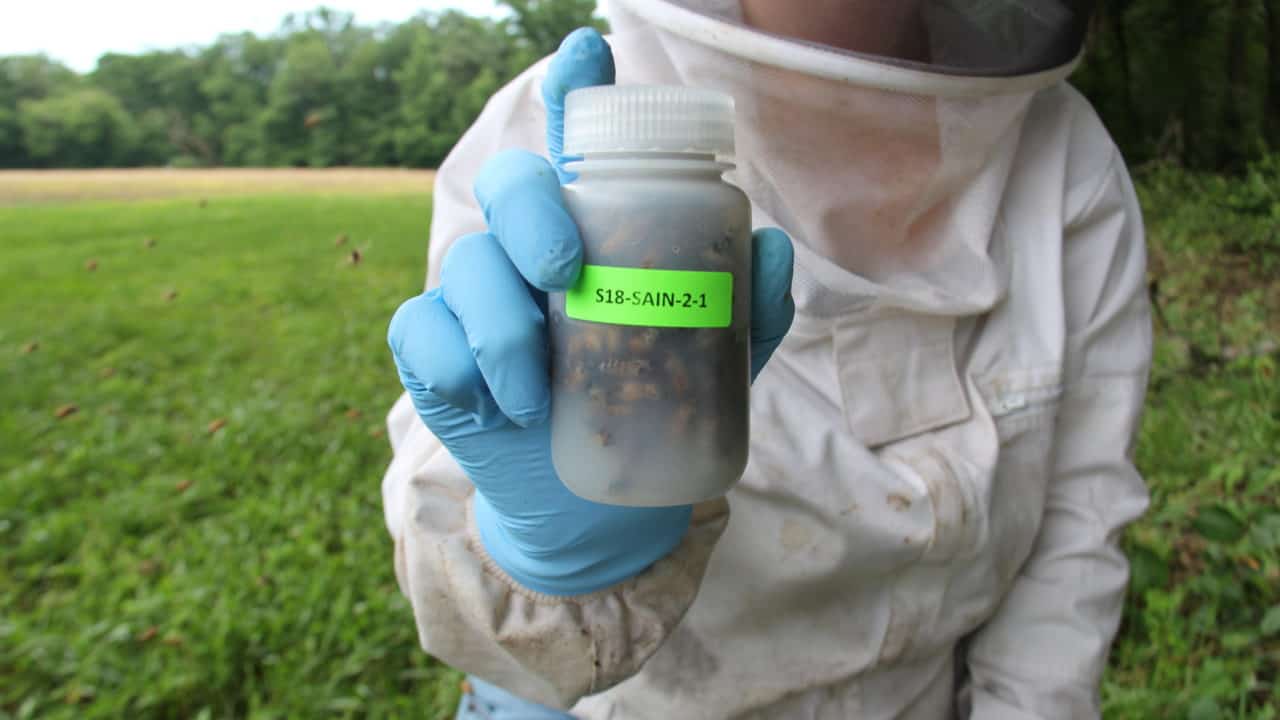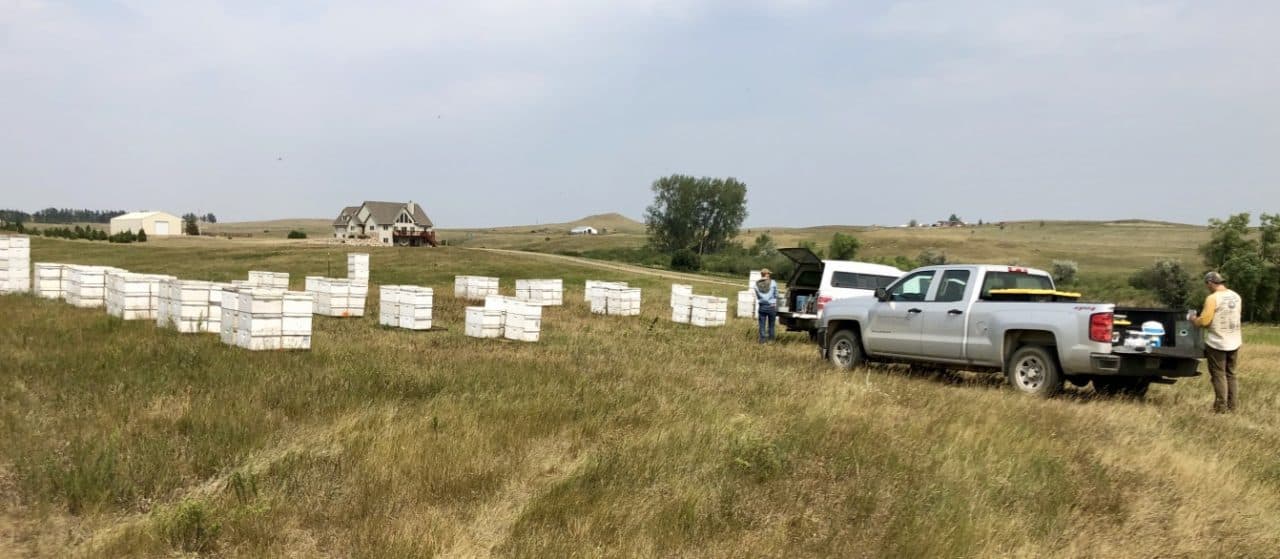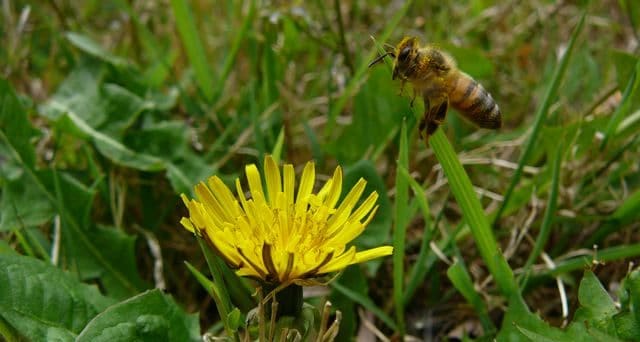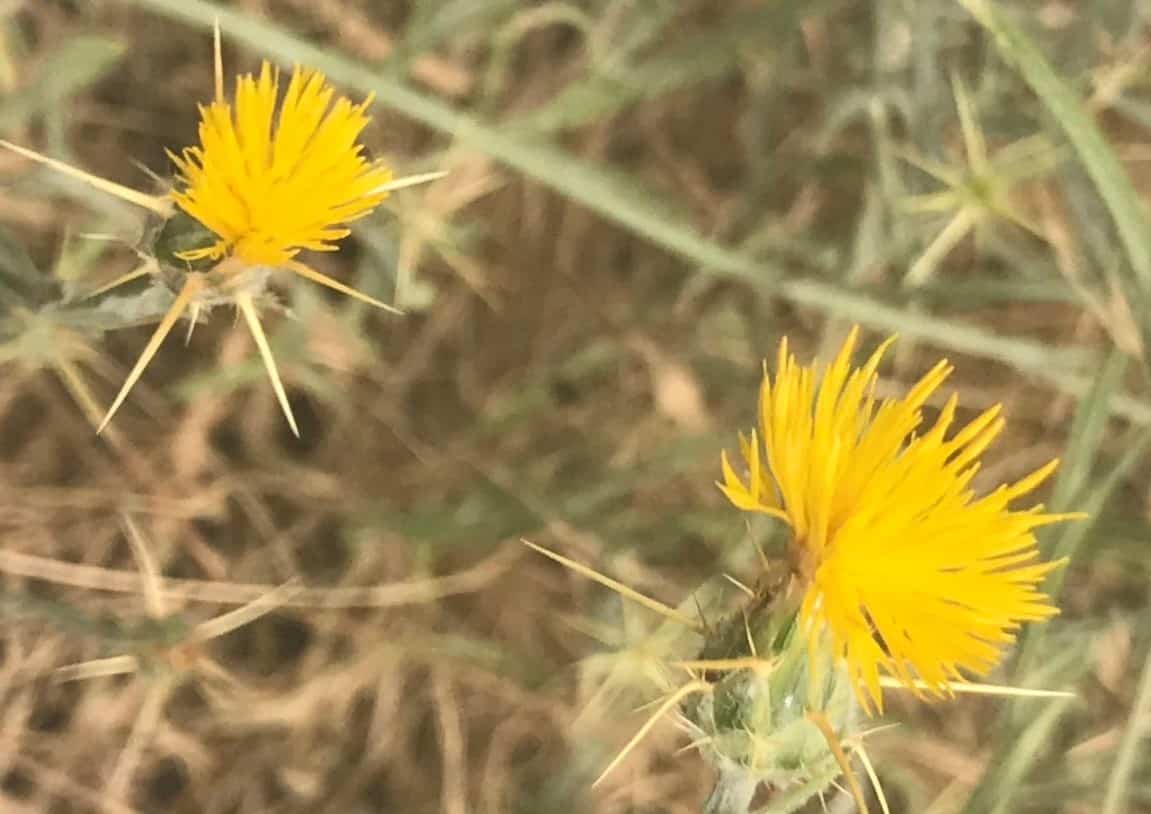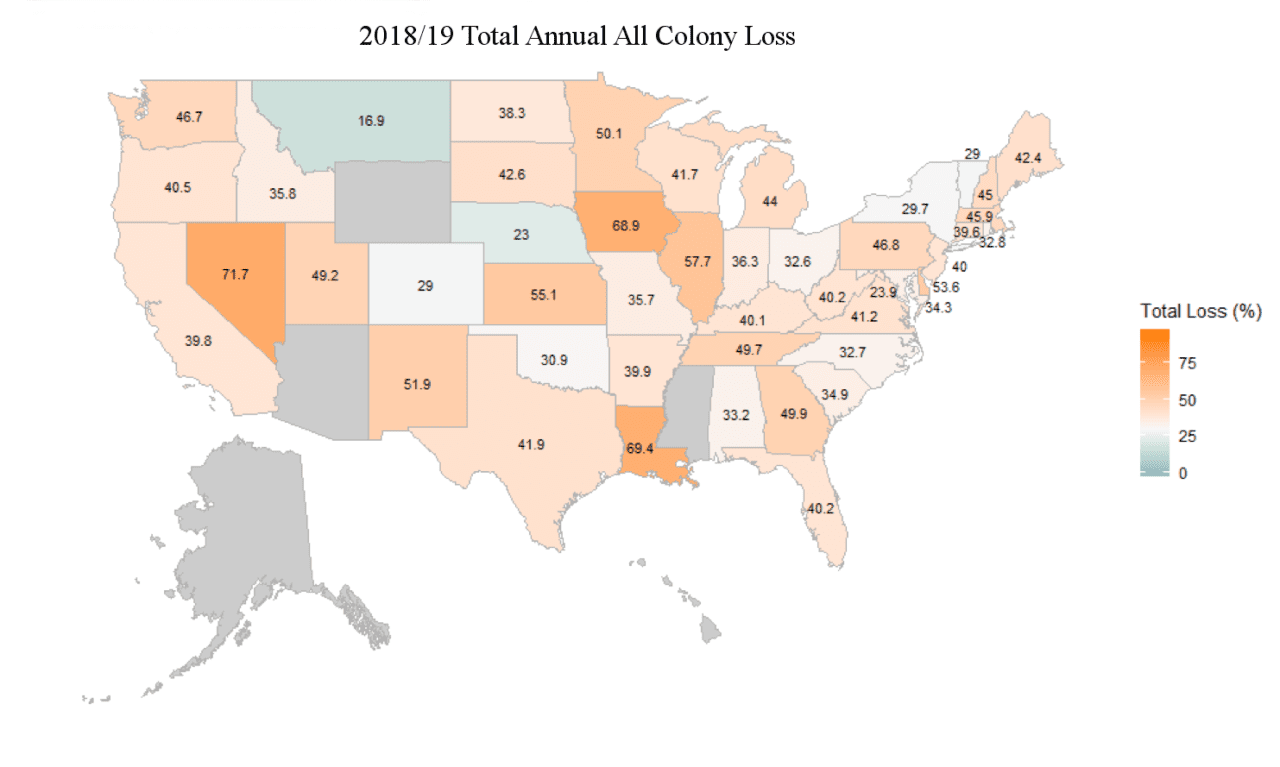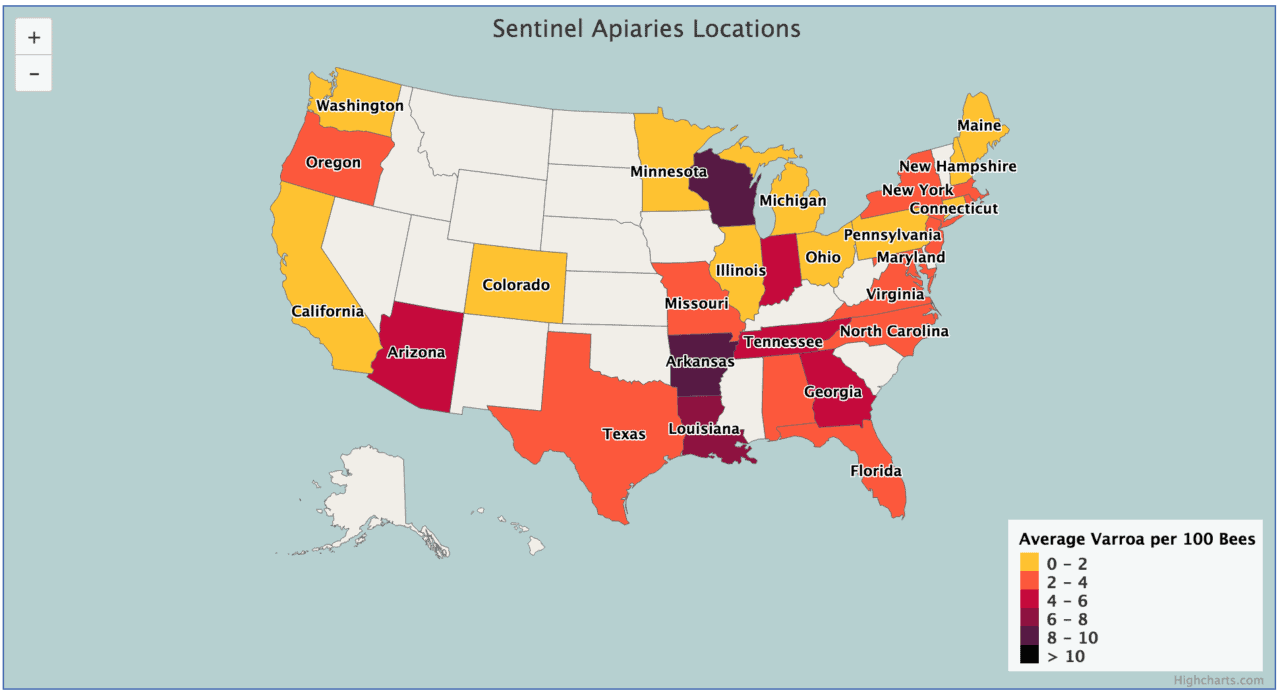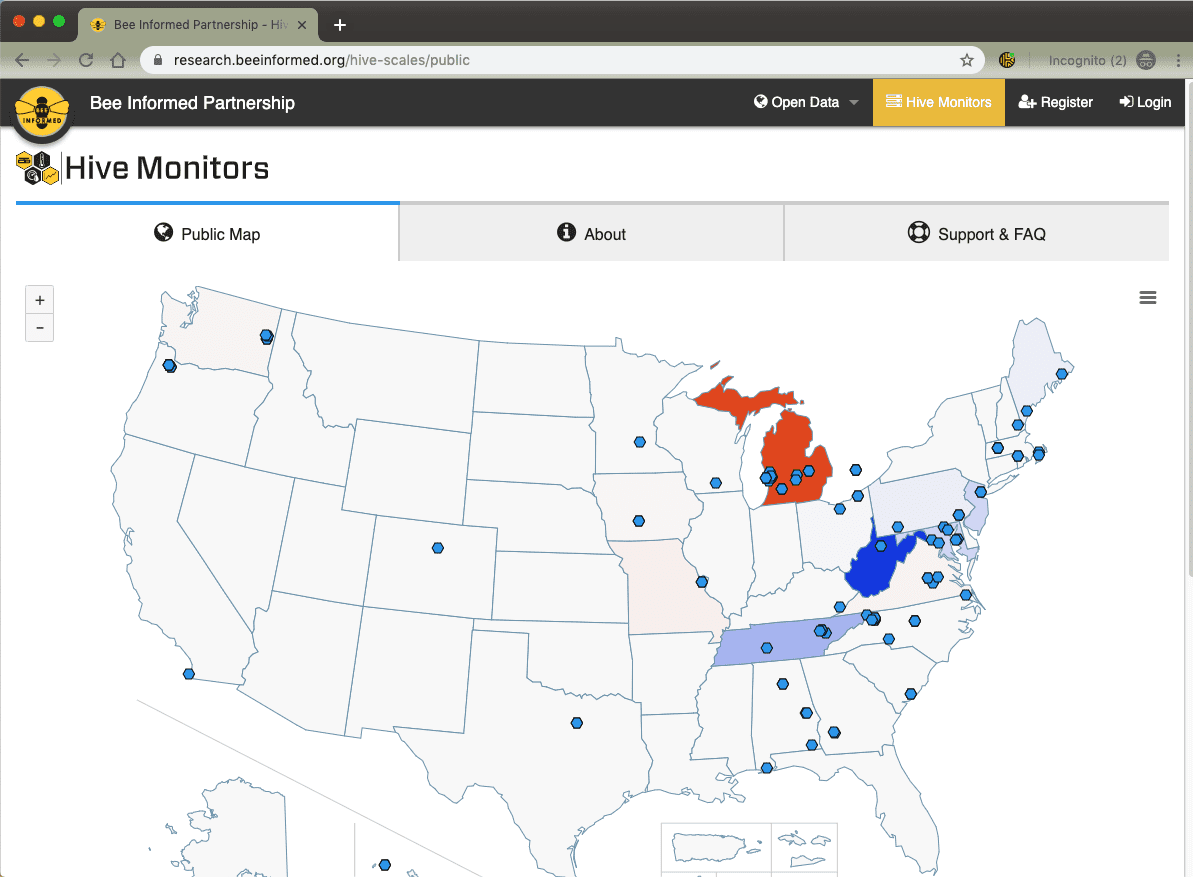That’s a wrap on the 2019 Sentinel Apiary Program! This year was a real record breaker with 106 Sentinel Apiaries in 29 states. Sentinel beekeepers put in blood, sweat, and stings to send in over 2,500 samples from 564 colonies. The data collected from these samples helps participants make data driven management decisions. Mite loads are also shared on our public interactive Varroa map, so that Sentinel Apiaries can act as regional benchmarks for colony health. If you would like to help support the Sentinel Apiary program and keep this valuable data accessible, please consider donating to our annual fundraising effort! On average, this year’s…
Blog
“Peace of Mind” Sampling
by Ben Sallmann, BIP Honey Bee Health Field Specialist, Northwest US At the end of the day, beekeepers want to know that their bees are healthy, well-fed, and prepared for the next season. Fall is a critical time for beekeepers because the condition of the bees now will determine the winter survival rate and the number of colonies available for almond pollination early next year. The photo above was taken at daybreak on the plateaus of western Idaho, where the bees worked the canola fields earlier in the summer. These bees have been left with good winter stores and sampling showed low varroa mite counts.…
Let’s Hear it from the Board!
The Bee Informed Partnership, like many nonprofits, has a Board vested in our organization's sustainability, success, and the pursuit of our strategic goals. Also, like many other nonprofits, our volunteer Board is composed of stakeholders who actually use our services. We are fortunate to have some of the best commercial beekeepers in the country on our board as well as some hard working, highly respected researchers. They usually work quietly behind the scenes but for our Fundraising event, I have asked a few of them to step out and speak to YOU, our readers and participants to say what they find compelling and unique about…
The BIP Tech Team Program – We GO where the bees GO!
by Anne Marie Fauvel & Nathalie Steinhauer The Technical Transfer Team Program offers regular on-site hive inspections and sampling services for large commercial beekeepers and queen breeders throughout the U.S. The team consists of 5 distinct regions, staffed by 6 Honey Bee Health Field Specialists, providing services to over 100 commercial beekeepers, in 17 states, 10 of which are the nation’s top honey producing states. As our honey bees and beekeepers migrate to pollinate our food crops and ensure food security, so do our Field Specialists. They collectively drove over 100,000 miles inspecting close to 20,000 colonies last year alone! Can you imagine the logistical…
Be Included, Be Involved, Bee Informed and Be Generous
In today’s world, we are asked to care passionately about so many things. From polar bears to plastic, we are often overwhelmed at how many good causes are asking for aid. There is precious little remaining bandwidth in our mental and emotional reserves for anything more, so I will make this short. If you or someone you know is a beekeeper in any part of the world, you know that we are asking more of these magnificent insects under increasingly challenging circumstances. Our wonderfully diverse food supply depends on them and our economy benefits from the fact they are here. However, we are also asking…
Yellow Star Thistle Produces Green Honey
Yellow star thistle (Centaurea solstitialis) was extremely prolific in some areas of California this year. Many commercial beekeepers commented on it. One said that he hadn't seen this much star thistle in over 20 years. Personally, I saw huge fields of it all over the Sacramento Valley, from Redding down to Davis. Further south, I didn't see nearly as much as it is considered a noxious weed and invasive species, and the eradication programs may be working well in the southern regions. Yellow star thistle originates from the Mediterranean. The similar climate of the Central Valley makes it ideal for it to grow. According…
(Spo)oktober Blog: Don’t be afraid of State Specific Colony Losses!
Happy Fall y’all! In normal life, “Fall” means Halloween (and dressing up as fatbody-sucking Varroa mite) and Thanksgiving (we certainly are grateful to be part of the beekeeper community). In beekeeping life, “Fall” means that nectar flows come to an end, queens lay fewer eggs, winter bees are being reared and we have to (still) deal with Varroa mites. All this is happening for a reason: To get the bees ready for and successfully bring them through winter. (Hard to believe here in Alabama where it is still blazing hot!) You may remember that we reported the highest honey bee colony winter losses since the…
Sentinel Apiary Program Monthly Memo: October Issue
Welcome back to yet another Sentinel Apiaries update. We’re coming to you in the spookiest month of the year with some pretty scary stuff: mites, mites and more mites! I spent an embarrassing amount of time in photoshop to drive this point home (see right). As we always do in September, we saw a pretty significant jump in mite loads last month. Over 50% of states were above treatment threshold. You can see a lot less yellow (below threshold states) on our Varroa heat map below. Mite loads in Sentinel apiaries were much higher this September than last year (see below). If you have yet…
Sentinel Apiary Program Monthly Memo: September Issue
Hello Beekeepers, we’re back with the September Sentinel Apiary update one day late but hopefully not a dollar short! It’s been a very busy month full of monitoring and treating for mites, plus a trip to Montreal for the Apimondia world beekeeping conference. It was such a blast to see so many Sentinel beekeepers and BIP supporters north of the border and to present the program at the citizen science session. Of course, while the beekeeper is away, the bees (and mites) will play. Here’s what happened with Sentinel Apiaries in August (September update to come shortly). Last month, 61 beekeepers submitted 330 samples…
Are you annotating your hive scale data?
The Bee Informed Partnership’s Electronic Hive Monitoring program gathers data from hundreds of electronic hive monitors located all over the USA. Much of this data is publicly available to the beekeeping community in a variety of actionable formats. For example, if you go over to the BIP research portal at research.beeinformed.org and click on Hive Monitors you can see a public gain/loss map that shows the 7 day moving average weight loss/gain of the hive monitors within that state. We are also doing algorithmic work on the data and attempting to discover more actionable information about colony health from this vast collection of electronically…
